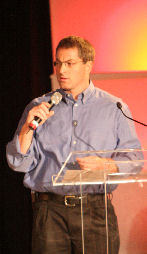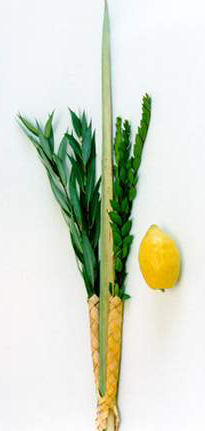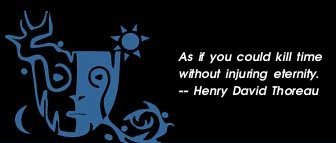

Sukkot:
A Time to Discover the Holy Within Everything
By Michael Karlin
President — Mythic Imagination Institute
Photo by Anne Parke Photography
As we move through the fall equinox, we enter the Jewish festival of Sukkot. Sukkot is the third pilgrimage festival in the Jewish calendar. It marks the final harvest before the winter, and is a festival filled with joy. Sukkot is also called zman simchateinu, the season of joy. Sukkot is filled with seemingly bizarre customs and rituals that seem foreign to our modern sensibilities. This is likely the reason why the vast majority of Jews today don't celebrate this holiday. As with most religious groups, we have lost much of our mythic imagination. We only see the symbols, and not the meaning to which they point. We have stopped seeing the magic in the ordinary. Scratch the surface just a bit, however, and you will find a holiday filled with joy, meaning and spirituality.
The holiday of Sukkot lasts for seven days. Sukkot is a time for connecting with family and community, for appreciating nature and our vulnerable place within it, for enjoying and celebrating the fruits of the season, for appreciating the forgiveness that was granted us through the fast of Yom Kippur. We build a temporary structure outside of our homes in which to eat meals (some even sleep in them) called a Sukkah. The roof is made from some form of organic material that was grown from the ground, but is not still planted, such as wood, evergreen branches or bamboo. The roof must be dense enough to create more shade then sun during the day, but not so dense that you cannot still make out the stars at night.  The building of the Sukkah is a family affair. Sides can be made of lattice, or draperies, or canvas. Once erected, the Sukkah is richly decorated with fruits of the season and the children's art works that represent the themes of the holiday. The end result is a beautifully decorated, open-air dining room co-created by the entire family. The building of the Sukkah is a family affair. Sides can be made of lattice, or draperies, or canvas. Once erected, the Sukkah is richly decorated with fruits of the season and the children's art works that represent the themes of the holiday. The end result is a beautifully decorated, open-air dining room co-created by the entire family.
The Sukkah is reminiscent of Abraham and Sarah's tent, which was known throughout Canaan as a place of hospitality and respite. As such, we are supposed to invite guests to join us in festive meals in our Sukkahs. At this time of year, the weather is generally just beginning to turn a little cool, so the weather is perfect for outdoor dining under the stars. Seven nights of celebratory meals under the stars with family and friends — you may wonder why more Jews don't celebrate this holiday.
 In addition to all of the obvious beauty and meaning of this holiday on its surface, the holiday is drenched in symbolic meaning. For example, there is a ritual that we perform in the Sukkah every day that can appear bizarre and antiquated at first sight. It is the shaking of the Lulav and Etrog. The Lulav is a gathering of three different species of plants: a branch of a willow, a myrtle, and a palm. The Etrog is a lemon-like fruit that grows in the Middle East. Every morning Jews are instructed to hold the Lulav in the left hand, the Etrog in the right, and bring them together in front of our heart. We say a blessing simply stating that G-d has commanded us to shake the Lulav and Etrog. We then shake it all together three times each towards all four directions, the earth and sky. Each time we shake it, we bring it back towards our heart. Granted, this can be a strange looking site to the modern eye, feel a little silly performing and seem rather meaningless to our literally inclined minds, yet this ritual is full of rich significance for our daily lives. This ritual brings our consciousness back to our relationships in the world, relationships with our self, our family, our community, and the world.
In addition to all of the obvious beauty and meaning of this holiday on its surface, the holiday is drenched in symbolic meaning. For example, there is a ritual that we perform in the Sukkah every day that can appear bizarre and antiquated at first sight. It is the shaking of the Lulav and Etrog. The Lulav is a gathering of three different species of plants: a branch of a willow, a myrtle, and a palm. The Etrog is a lemon-like fruit that grows in the Middle East. Every morning Jews are instructed to hold the Lulav in the left hand, the Etrog in the right, and bring them together in front of our heart. We say a blessing simply stating that G-d has commanded us to shake the Lulav and Etrog. We then shake it all together three times each towards all four directions, the earth and sky. Each time we shake it, we bring it back towards our heart. Granted, this can be a strange looking site to the modern eye, feel a little silly performing and seem rather meaningless to our literally inclined minds, yet this ritual is full of rich significance for our daily lives. This ritual brings our consciousness back to our relationships in the world, relationships with our self, our family, our community, and the world.
There are many traditions that elucidate the meaning of this ritual. One relates the four species to different parts of our body: the myrtle - eyes, willow - mouth, palm - spine, Etrog - heart. The eyes are symbolic of our outlook, the way we choose to see the world. Our spine is the center of action. The lips represent our speech, and our heart is the core of our emotional life. In this way, the Lulav and Etrog represent balance and authenticity in our being. We must strive to be consistent in our speech, actions, outlook, and emotions. We bring all of these into our heart, so they are all in alignment with our spiritual path. The Lulav and Etrog, in this way, remind us of our spiritual path, our need to perfect our relationship with our self and bring it all into spiritual alignment.
Now that our consciousness has been drawn inward, it is time to reflect on our place in humanity, and our relationships with those around us. The Kabbala shows us how the shaking of the Lulav and Etrog reminds us of the unity of all of humanity. Each species has a different combination of qualities, like people. The willow has no taste and no smell. It represents a person without wisdom or good deeds. The palm has a pleasant taste and no smell. This represents a person with wisdom, but no good deeds. The myrtle has a good smell, but no taste. It represents a person with good deeds, but no wisdom. Finally, the Etrog has both a good taste and a nice fragrance, representing a person with wisdom and good deeds. We are commanded to take all four species together. If any one of the species is missing, it is not kosher, and you have not fulfilled the mitzvah. You must hold them all together, into your heart, and shake it as a unit towards all corners of the world. Humanity is made up of all types of people, and we must bring them all into our heart. We must have respect, compassion, and love for all of humanity.
When my family invites people into our Sukkah for meals during the holiday, we find that most have never heard of these interpretations. This is just as true for the Jews as the non-Jews. They have always seen this shaking as an old, superstitious custom that does not fit into the modern world. They have lost the metaphor and were stuck simply with the symbol. A symbol that does not point towards its deeper symbolic meaning is just a useless object, which so many of our ritual objects have become. When we open these symbols back up to the mystery and imagination that they embody, we open ourselves up to their magic, and transformation can take place. The Chasidim believe that everything has the holy spark within it, no matter how evil it may appear to us. Our job on Earth is to reveal this holiness. Then the whole world will be holy. As you move through this Equinox period, descending into darkness, think of the Lulav and Etrog, and reveal the holy things in your life.
Blessings.
Return to Passages Menu
Subscribe to the Passages e-newsletter
|

